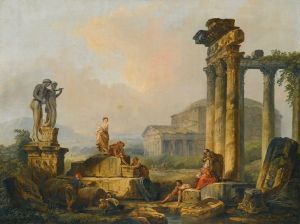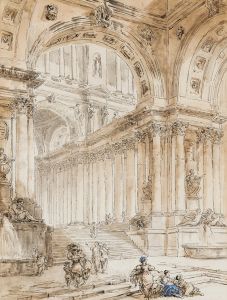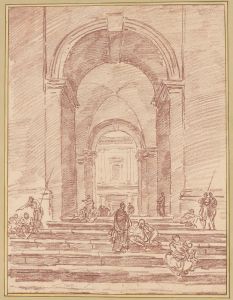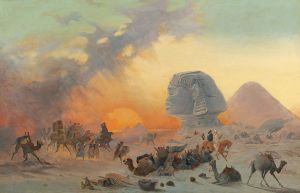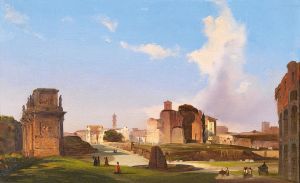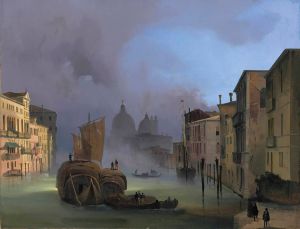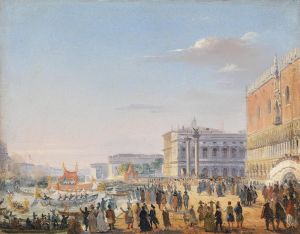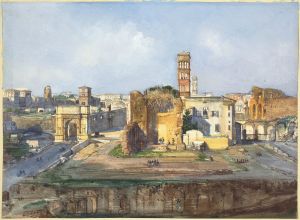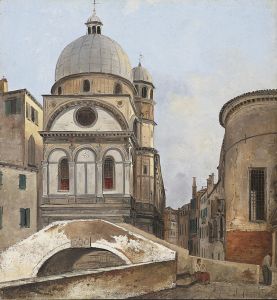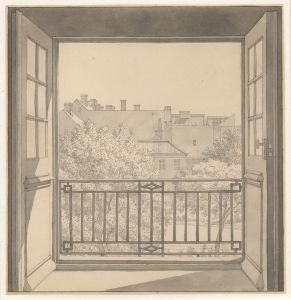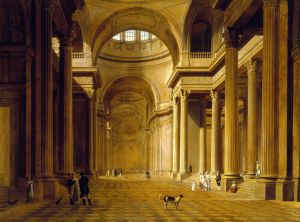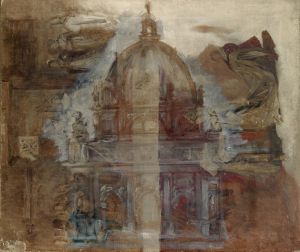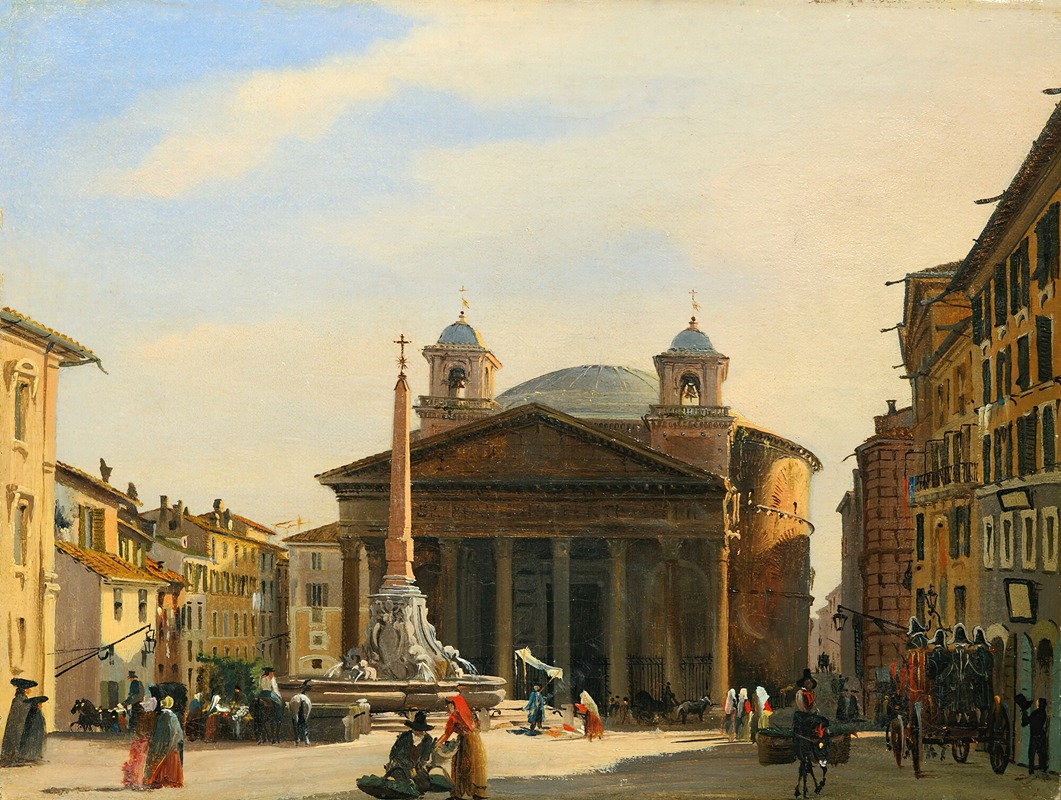
The Pantheon, Rome
A hand-painted replica of Ippolito Caffi’s masterpiece The Pantheon, Rome, meticulously crafted by professional artists to capture the true essence of the original. Each piece is created with museum-quality canvas and rare mineral pigments, carefully painted by experienced artists with delicate brushstrokes and rich, layered colors to perfectly recreate the texture of the original artwork. Unlike machine-printed reproductions, this hand-painted version brings the painting to life, infused with the artist’s emotions and skill in every stroke. Whether for personal collection or home decoration, it instantly elevates the artistic atmosphere of any space.
Ippolito Caffi was an Italian painter known for his detailed and atmospheric cityscapes and landscapes, often capturing the interplay of light and architecture. One of his notable works is "The Pantheon, Rome," which exemplifies his ability to depict architectural grandeur with a keen sense of perspective and light.
The Pantheon in Rome, originally built as a temple for all Roman gods, is one of the best-preserved monuments of ancient Rome and has been in continuous use throughout its history. The structure, completed by the emperor Hadrian and possibly designed by Apollodorus of Damascus, is renowned for its massive dome and oculus, which allows natural light to illuminate the interior. This architectural marvel has inspired countless artists, architects, and scholars over the centuries.
Caffi's painting of the Pantheon captures the iconic structure with a focus on its architectural details and the play of light and shadow. Known for his precise and atmospheric style, Caffi often painted scenes that highlighted the grandeur and historical significance of the locations he depicted. His works are characterized by their meticulous attention to detail and the ability to convey the mood and atmosphere of a place.
In "The Pantheon, Rome," Caffi likely employed his skills in perspective to render the Pantheon's imposing façade and its harmonious proportions. The painting would have showcased the Pantheon’s Corinthian columns and the pediment, emphasizing the building's classical architectural elements. Caffi's use of light would have been crucial in this work, as the Pantheon's oculus creates a dynamic interplay of light and shadow within the structure, a feature that artists have long found fascinating.
Caffi's interest in capturing the essence of a place is evident in his choice of subject matter. The Pantheon, with its rich history and architectural significance, would have provided ample inspiration for Caffi's artistic exploration. His ability to depict the Pantheon in a way that highlights its historical and cultural importance aligns with his broader body of work, which often focused on iconic landmarks and urban scenes.
Ippolito Caffi's paintings are appreciated for their historical accuracy and artistic quality, making them valuable records of the places and times they depict. His work on the Pantheon would have contributed to the 19th-century appreciation of Roman architecture and history, offering viewers a glimpse into the enduring legacy of ancient Rome through the eyes of a skilled artist.
While specific details about the painting "The Pantheon, Rome" by Ippolito Caffi might not be extensively documented, his broader oeuvre provides insight into his approach and style. Caffi's works are held in various collections, and his paintings continue to be studied and admired for their contribution to the understanding of 19th-century art and architecture.
Overall, Ippolito Caffi's depiction of the Pantheon stands as a testament to his skill in capturing the essence of architectural masterpieces, reflecting both the grandeur of the ancient world and the artistic sensibilities of his time.





